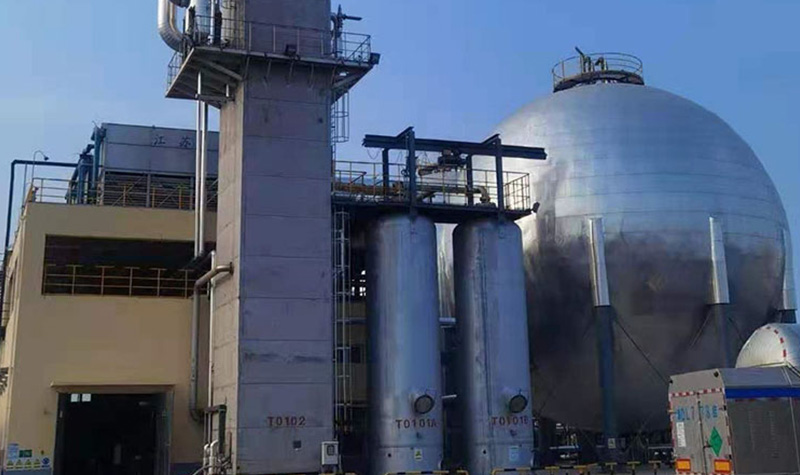The gas source for carbon dioxide (CO2) recovery plants usually comes from industrial emissions or naturally occurring high concentration CO2 gas, depending on the application scenario and economy. The following are common classifications and characteristics of gas sources:
Industrial emission sources
(1) Fossil fuel combustion flue gas
-Source: Coal/gas power plants, boilers, industrial kilns, etc.
-Characteristics: Low concentration of CO2 (usually 10% -20%), requiring pre-treatment (dust removal, desulfurization, denitrification, etc.), and high recovery cost.
-Technology: commonly used amine absorption methods (such as MEA), membrane separation, or low-temperature distillation.
(2) Chemical production process
-Source:
-Synthetic ammonia/hydrogen production: high concentration of CO2 in by-product gas (15% -30%).
-Ethylene production: The flue gas from the cracking furnace contains CO2.
-Cement production: The concentration of CO2 in the kiln tail gas is about 20% -30%.
-Characteristics: High concentration, relatively economical recycling.
(3) Refining and Steelmaking
-Refinery: Catalytic Cracking (FCC) unit emits CO2.
-Steel plant: Blast furnace gas and converter gas contain CO2 (20% -30%).
(4) Biomass energy
-Bioethanol fermentation: The concentration of CO2 in the fermentation exhaust gas is nearly 100%, with extremely high purity, and can be directly liquefied and recovered.
High purity natural CO2source
(1) Natural gas field
-Associated CO2: Some gas fields contain high concentrations of CO2 (such as Jilin Oilfield in China and Sleipner Gas Field in Norway), which can be directly separated and purified
(2) Geothermal well
-Some geothermal fluids contain CO2, such as the carbon capture project at the Hellishei ð i geothermal power plant in Iceland.
Biogenic sources
-Biogas: Anaerobic fermentation produces a mixture of CO2 (30% -50%) and methane, which needs to be separated.
-Biomass combustion: The smoke from burning wood or crops has a CO2 concentration similar to that of fossil fuels.
Direct Air Capture (DAC)
-Source: Capture CO2 directly from the atmosphere (concentration only about 0.04%).
-Characteristics: High technical difficulty and cost, but suitable for decentralized recycling or carbon neutrality supplementation methods.
-Technology: Chemical adsorption (such as potassium hydroxide solution), solid adsorbents (such as MOFs).
Key selection factors
- CO2concentration: The higher the concentration, the lower the energy consumption and cost of recovery (such as fermentation gas>flue gas).
- Gas impurities: sulfur, nitrogen oxides, or dust require pre-treatment.
- Scale and economy: Large industrial sources are more suitable for large-scale recycling.
- Carbon policy: Carbon taxes or subsidies affect technology choices.
Typical application scenarios
-Food grade CO2: High purity sources such as fermentation and chemical by-products are preferred.
-EOR (Enhanced Oil Recovery): CO2 can be generated from power plant flue gas or natural gas.
-Carbon Neutrality: DAC or Biomass Combined CCUS (Carbon Capture, Utilization, and Storage).
Matching gas sources and recovery technologies (such as adsorption, membrane separation, low-temperature liquefaction, etc.) according to specific needs can significantly improve efficiency and reduce costs.


